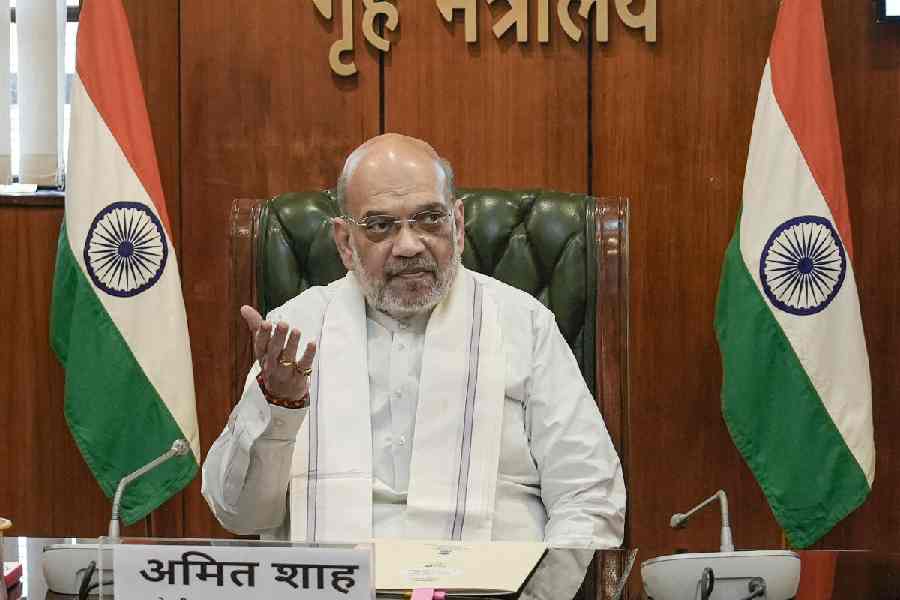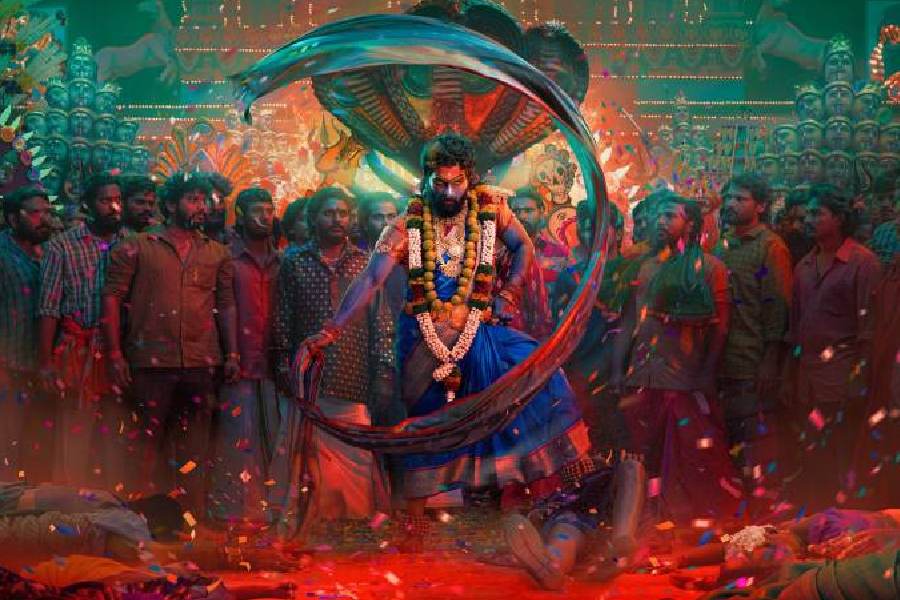The repertoire of the veteran Odissi exponent, Sharmila Biswas, rests on a rich and diverse idiom that seamlessly blends the traditional with the folk, the sacred with the secular, contemporary with classical forms. In yet another evocative presentation, the danseuse and her troupe, the Odissi Vision and Movement Centre, performed Jagriti, which meditates on the trajectory of Odissi, from its mystic past to its present fluidity. The recital, Jagriti — it can be loosely translated as ‘awakening’ — at the Indian Museum saw the OVM perform three back-to-back acts, which paid tributes to not only the court and temple dances by devadasis but also the rural variations synonymous with village akhadas, thereby providing a panoramic view of the evolution of this genre.
The opening act was Devi Bharani, a ritual originating in the temples of western Odisha that is performed during the time of Dussehra to invoke the spirit of the goddess, Samaleshwari, through the body of a medium (devotee). The invocation was made through drums and flute, which lent the presentation a folkish texture, as the dancers used movement along with props and fabric to convey intricate expressions and transitions between the scenes. The atmosphere was heightened by the ambient sounds of the temple that created a trance-like mood, fitting perfectly within the paradigm of the awakening. Biswas’ deft understanding of interdisciplinary elements and her extensive field research enriched the choreography that investigated the links among diverse strands.
Devi Bharani was followed by the short, energetic Kabaddi — the original second act was dropped because of a glitch — which relied on bols of Sambalpuri dance to forge an interaction between two competing teams through the ‘language’ of kabaddi. The rhythmic movements coupled with acrobatic postures infused the performance with spontaneity.
The final act presented a combination of the masculine martial art of Chhau and the feminine Matki. Here, Biswas inverted the gender roles, showing male dancers indulging in the feminine form for amusement. The three acts were woven together by the narration of an omniscient sutradhar.











